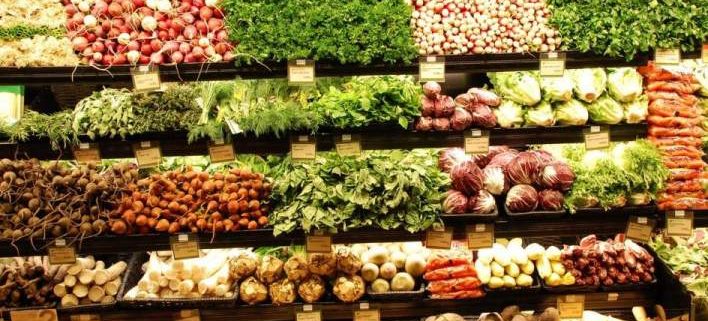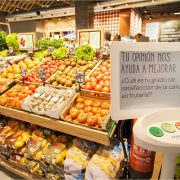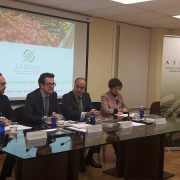Selling fruit and vegetables in organized distribution shows signs of growth
Aurelio del Pino is President of the Association of Spanish Supermarket Chains (ACES). Felipe Medina responsible for Food Chain of the Spanish Association of Distributors, Supermarkets and Supermarkets (ASEDAS). Both have reflected, at the request of e-Comercio Agrario (ECA), on the situation of organized distribution as far as selling fruit and vegetables are concerned. And it has been and is a strategic ally for the sector, acting as a growth engine and transmission belt innovation.
By Marta Fernandez
Responsible both agree that the current year is being marked by continued showing signs of slight recovery that began in 2015. Data Aurelio del Pino stands at an increase in household spending 1.5% in fruits and vegetables of 2.25%, although with a decline in per capita consumption, according to food consumption Panel of February.
According to Pino, the index of retail trade in July, also shows an annual consumption recovery in food, namely 2.9%
Therefore, in the words of Felipe Medina, further work is needed for all the positive symptoms of the economy strengthened, since “our sector in Spain has a large food chain representing 8.4% of GDP and is the second economic sector of the country that brings more money after tourism”.
Consumer trend
Economic hardship arising from the crisis have brought a series of changes that are reflected in distribution. Including buying habits, says the head of ASEDAS, for whom now more valued the presence of fresh food because buying has become more daily than in the past decade, and “the trend is that fresh continue having a very important in all formats weight because the consumer demands it”.
To which Aurelio del Pino adds that although when it comes to innovation in the field of consumer tend to value only releases the food industry, the sector of fruit and vegetables is one that is more boosting the market, especially by means of varietal innovations and developments of range and packaging, highlighting the product format of convenience among urban consumers.
Strengths and weaknesses
Felipe Medina to the supermarket is a model that has now been years being the consumer preferred by the proximity to the homes, the full range and competitive prices, and confidence in the workers and in the product.
Meanwhile, Aurelio del Pino highlights the potential, professionalism and efficiency of large cooperatives and SATs with the distribution works fine.
A pending issue remains have greater penetration in the younger strata of the population
This weakness, Pino said that “the challenge requires further enhance the nutritional and health values of foods, and go beyond, and also convey the pleasure that consume”. While for Medina “there is always room for improvement to be more productive. Containing costs is something that involves the entire distribution from the hypermarket to the small shop, and of course the supermarket. For this, we are asking the Administration approval effective rules that help companies to do their work. with regard to relations between producers and distributors have taken a big step with the Commercial Code of Good Practices in Food Procurement“, he adds.












